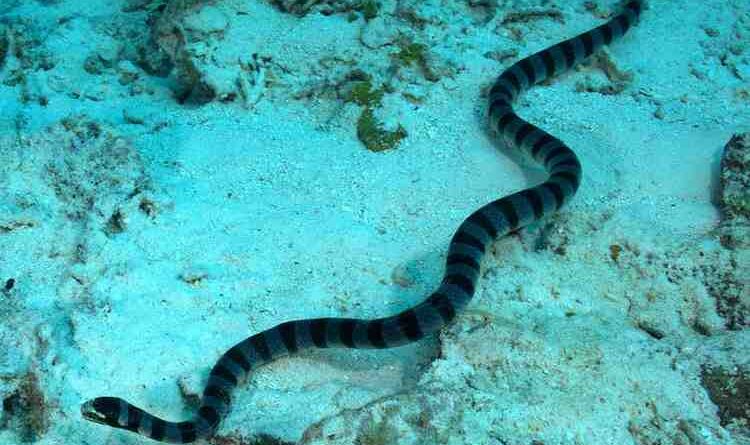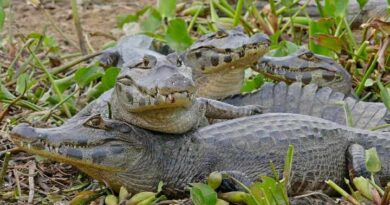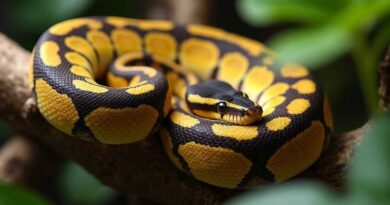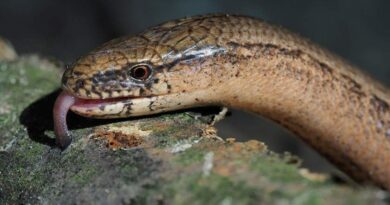Sea snakes
Sea snakes are poisonous snakes that live permanently in the sea, with the body flattened from side to side and the tail flattened and paddle-shaped. They swim with a sculling action of the tail, keeping mainly near the surface but able to submerge, closing the valvular nostrils on the top of the snout. They are, however, fully air-breathing and must surface periodically or drown. The head is characteristically small, and the front half of the body is slender, with the hindquarters more fully rounded. Some sea snakes reach a length of 10 ft (3 m), but the majority are 4-5 ft (1-2–1-6 m) long. All have venom glands with cobra-like fangs that are hollow and permanently erect in the front of the mouth.
The 50 species are confined to the tropics, especially in the eastern Indian Ocean and western Pacific, mainly living in inshore waters. Some sea snakes swarm in the cracks and crannies of rocks in the intertidal zone. A few are known to enter tidal rivers up to 100 miles (160 km) inland. Only one species, Hydrophis semperi, is confined to freshwater in the Philippines. One of the most common and widely distributed sea snakes is the yellow-bellied sea snake Pelamis platurus, which is black on the back and yellow or pale brown below.
Although the venom of a sea snake is potent for small fish, there are relatively few reports of fatal accidents among fishermen. Family: Hydrophidae, Order: Squamata, Class: Reptilia.



